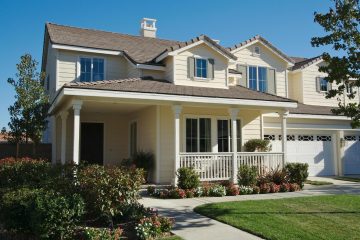Dallas, with its booming economy and rapidly growing business sector, has become a prime location for commercial properties. As the city expands, property owners face the unique challenge of keeping their buildings up to date to maintain competitiveness and attract tenants.
However, upgrading commercial properties is no simple task. From navigating local regulations to managing budgets, the process can be overwhelming. In this article, we’ll explore the common challenges faced during commercial property upgrades and offer strategies to help you successfully navigate these obstacles.
- Managing Permits and Regulations
One of the most significant challenges when upgrading commercial properties is managing the various permits and regulations required by the city. Dallas has specific zoning laws and building codes that must be followed to ensure compliance. For example, if you’re planning to upgrade the exterior of your building, you may need approval from the city’s historic preservation office, especially if the property is located in a designated historic district.
To streamline the process, it’s crucial to work with contractors and architects who have experience in dealing with Dallas’ specific regulations. By proactively managing permits and regulations, you can avoid potential legal issues and make sure that your property upgrades are completed on time and within budget.
- Addressing Roofing Challenges
One of the most common challenges property owners face in Dallas is dealing with roofing damage caused by the elements. Dallas is no stranger to heavy rains, hail, and even high winds, all of which can cause significant wear and tear on a roof. Over time, these factors can lead to leaks, structural damage, and energy inefficiency, all of which can negatively impact the value and safety of your property.
Upgrading your roofing system is a critical component of any property improvement plan, and it’s important to work with experts who understand the specific demands of the Dallas area. Dallas commercial roofing professionals are well-versed in the challenges posed by the local climate and can recommend the best materials to ensure long-term durability.
For instance, upgrading to high-quality, impact-resistant roofing materials can provide better protection against hail and wind damage. Additionally, energy-efficient roofing options, such as reflective coatings or cool roofs, can help reduce energy costs by minimizing heat absorption during the hot summer months.
- Balancing Budget and Quality
Another significant challenge in commercial property upgrades is balancing the budget with the quality of materials and workmanship. Upgrades can quickly become expensive, especially when dealing with large commercial properties, so it’s important to prioritize where to allocate your resources.
One common mistake property owners make is focusing too much on cost-cutting, which can lead to poor-quality work and materials. While it may be tempting to choose the lowest bid for a project, this approach can backfire in the long run. Low-quality materials are more likely to fail, leading to costly repairs and replacements down the line. Additionally, subpar workmanship can result in a less-than-professional appearance, which can deter potential tenants or clients.
To strike the right balance between budget and quality, it’s essential to focus on upgrades that offer the best return on investment. For example, energy-efficient systems, such as upgraded HVAC or lighting, can provide significant cost savings over time through reduced utility bills. Similarly, durable materials, such as high-quality roofing or siding, can extend the lifespan of your property and reduce maintenance costs.
- Minimizing Disruption to Business Operations
One of the most challenging aspects of upgrading a commercial property is minimizing the disruption to business operations. Whether your property is a retail space, office building, or industrial facility, keeping the business running smoothly during renovations is crucial to maintaining revenue and tenant satisfaction.
Upgrades can be noisy, messy, and time-consuming, all of which can interfere with daily operations. For example, replacing a roof or upgrading the HVAC system may require shutting down certain areas of the building temporarily, which can be inconvenient for tenants or employees. In retail settings, construction noise or restricted access can deter customers, leading to a loss of sales.
To minimize disruption, it’s important to plan the upgrade process carefully. One effective strategy is to schedule work during off-hours or weekends when the building is less occupied. This approach can reduce the impact on tenants and allow business operations to continue with minimal interruption.
Another strategy is to phase the upgrades, completing one section of the building at a time. This method allows tenants to continue using other parts of the property while work is being done, minimizing the overall disruption.
- Incorporating Modern Technology
Incorporating modern technology into older commercial properties presents its own set of challenges. However, these upgrades are often necessary to meet current standards and improve the overall functionality of the building.
Older properties may have outdated electrical systems, HVAC units, and security features that are not only less efficient but also pose safety risks. Upgrading these systems can be costly and complex, especially when dealing with the constraints of existing structures.
For instance, replacing an outdated electrical system may require extensive rewiring, which can be disruptive and expensive. Similarly, upgrading an old HVAC system may involve significant modifications to accommodate new equipment. However, the benefits of these upgrades far outweigh the challenges.
Modern electrical systems are designed to handle the increased demand of today’s technology, reducing the risk of fires and power outages. Energy-efficient HVAC systems can improve indoor air quality, reduce energy consumption, and provide a more comfortable environment for tenants. Upgrading security features, such as installing smart access controls or surveillance cameras, can improve the safety and security of the property.
Upgrading commercial properties in Dallas comes with its fair share of challenges, but with careful planning and the right strategies, these obstacles can be successfully navigated. From managing permits and regulations to balancing budget and quality, each aspect of the upgrade process requires attention to detail and a focus on long-term value.
Working with experienced professionals who understand the specific demands of the Dallas market is crucial. By addressing common challenges head-on and making informed decisions, property owners can protect their investments and enhance the overall value and appeal of their commercial properties.




